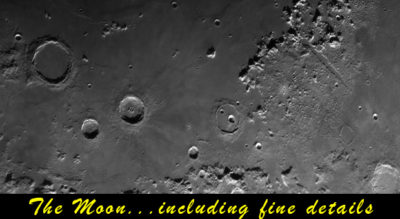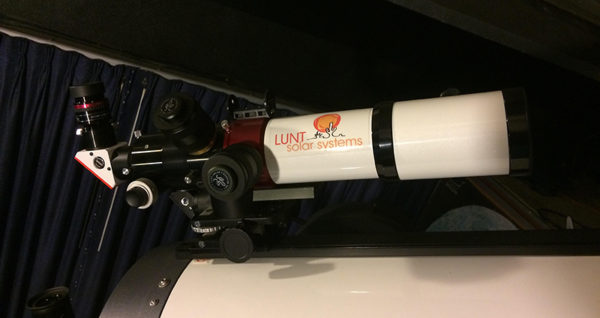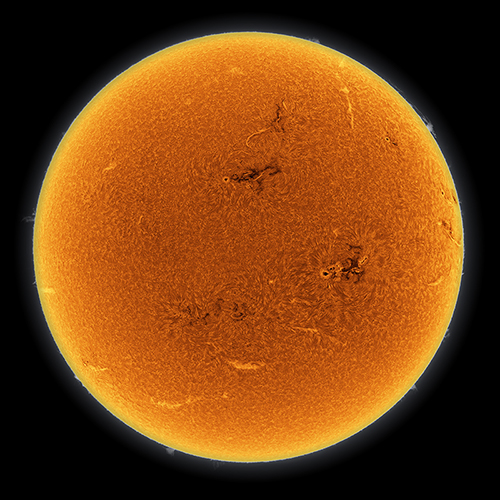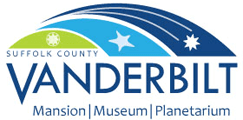The larger telescope for viewing of the nighttime sky is a 16” Meade Cassegrain style telescope. This telescope allows visitors to peer through the eyepiece to take in real-time views of the highlights in the evening sky. Below are just some typical sights you might see on any given Friday night.






The scope is a Lunt Solar Systems LS80Tha Pressure-Tuned Hydrogen-Alpha Telescope. This refractor style telescope has an 80mm optical aperture. It is also set up with a Dual Internal Stack Etalon System that provides sharp detail and contrast of features on the surface and limb of the Sun. Prominences, flares, super granulation, filaments, and active regions will be observed.
H-alpha light is emitted by the hydrogen atoms that make up the majority of the Sun’s composition. When electrons within the hydrogen atoms absorb energy and rise to a higher energy level we can see this light in our specialized telescope.
Typically, telescopic views of objects in outer space rarely change before our eyes in real-time. However, on a day when the Sun is particularly active we can watch features on the Sun evolve before our eyes while looking through a H-alpha telescope!


